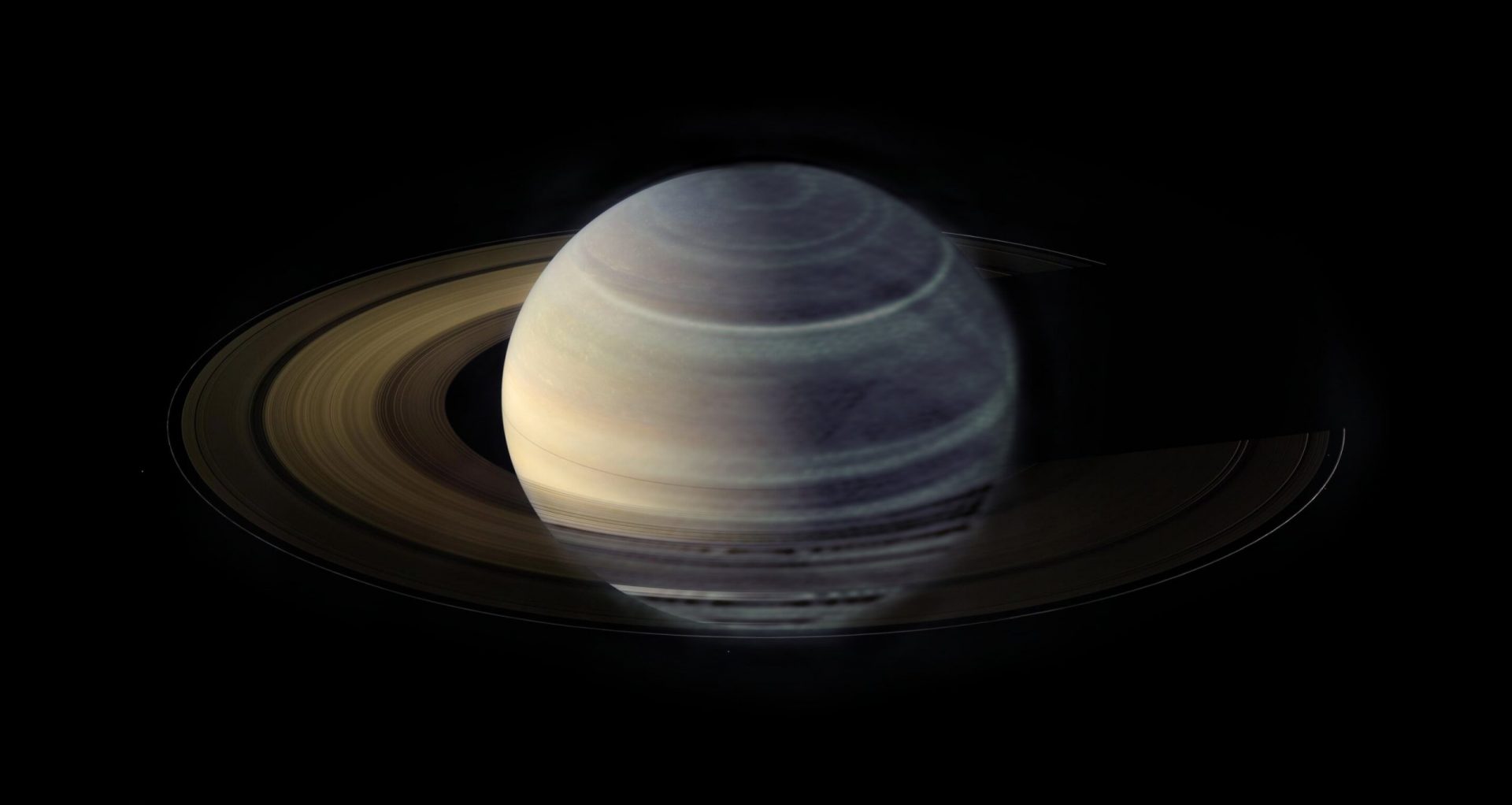Prepare to be amazed by the largest storm in the solar system! Jupiter’s surface has been adorned with the Great Red Spot, a massive 10,000-mile-wide anticyclone, for centuries.
But hold on, there’s more! A recent study has revealed that Saturn, although less vibrant than Jupiter, also boasts long-lasting megastorms that have a profound impact on its atmosphere for centuries.
Astronomers from the University of California, Berkeley, and the University of Michigan, Ann Arbor, conducted this groundbreaking study. By analyzing radio emissions from Saturn, they discovered persistent disruptions in the distribution of ammonia gas deep within the planet’s atmosphere.
Published in the esteemed journal Science Advances, this study sheds light on the mysterious megastorms that occur every few decades on Saturn. These colossal storms, similar to hurricanes on Earth but on a much grander scale, remain an enigma. Saturn’s atmosphere, primarily composed of hydrogen and helium with traces of methane, water, and ammonia, presents a cosmic puzzle.
Lead author Cheng Li, an assistant professor at the University of Michigan, explains, “Understanding the mechanisms of the largest storms in the solar system puts the theory of hurricanes into a broader cosmic context, challenging our current knowledge and pushing the boundaries of terrestrial meteorology.”
For over four decades, Imke de Pater, a professor emerita of astronomy and earth and planetary sciences at UC Berkeley, has been studying gas giants like Saturn to unravel their composition and unique characteristics. Using the Karl G. Jansky Very Large Array in New Mexico, de Pater and her team delve into the radio emissions from deep within the planet, providing valuable insights.
“At radio wavelengths, we probe below the visible cloud layers on giant planets. Observations below these cloud layers are crucial to understand a planet’s true atmospheric composition, a key parameter for planet formation models,” de Pater explains. “Radio observations help us study the dynamics, physical processes, and chemical reactions occurring in the atmospheres of giant planets on both global and local scales.”
In their study, de Pater, Li, and UC Berkeley graduate student Chris Moeckel made a surprising discovery. They found anomalies in the concentration of ammonia gas in Saturn’s atmosphere, which they linked to past megastorms in the planet’s northern hemisphere.
The team observed that the concentration of ammonia is lower at midaltitudes, just below the uppermost ammonia-ice cloud layer. However, it becomes enriched at lower altitudes, around 100 to 200 kilometers deeper in the atmosphere. They believe that this ammonia is transported from the upper to the lower atmosphere through precipitation and reevaporation, a process that can last for hundreds of years.
Interestingly, while both Saturn and Jupiter are composed of hydrogen gas, they exhibit significant differences. Jupiter’s tropospheric anomalies are associated with its zones (whitish bands) and belts (darkish bands), not storms like on Saturn. This disparity challenges our understanding of megastorm formation on gas giants and other planets, and may even impact future studies of exoplanets.








